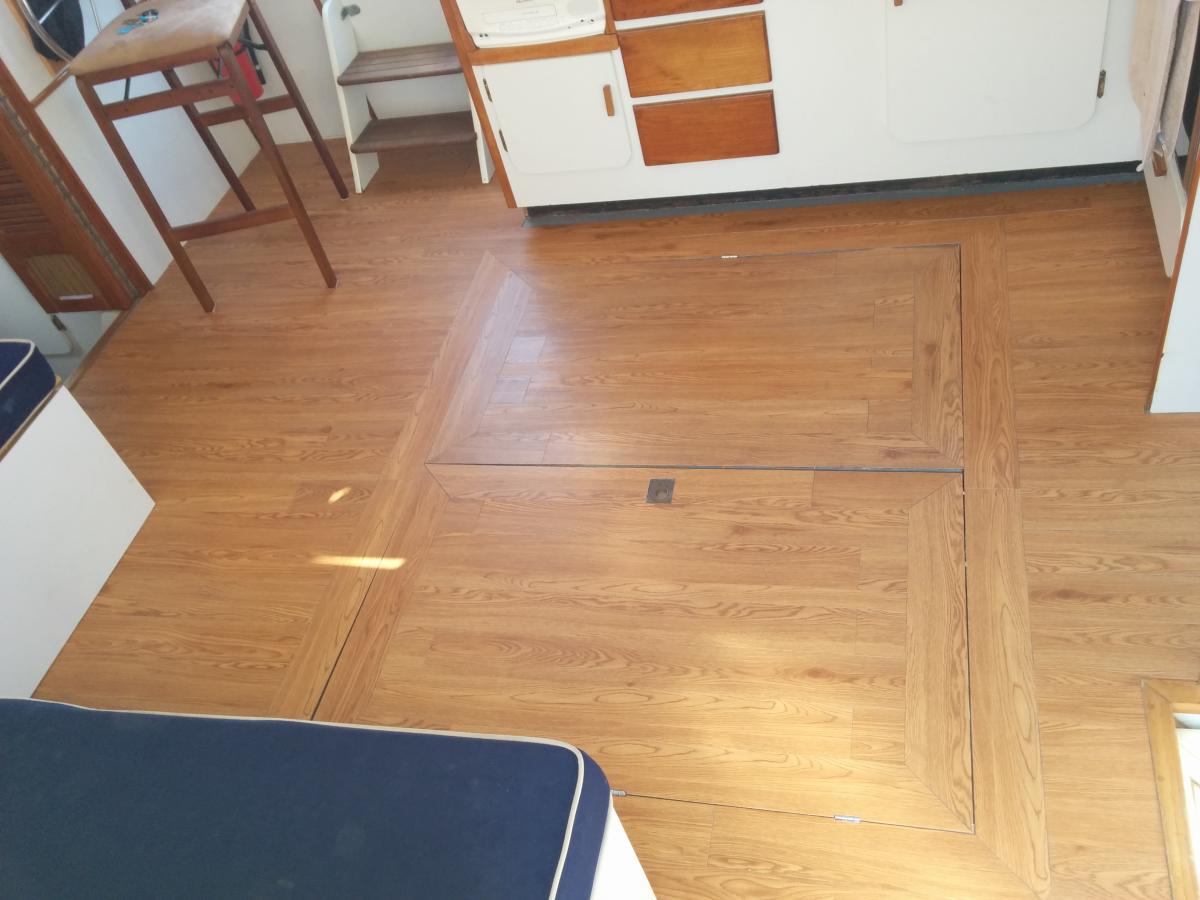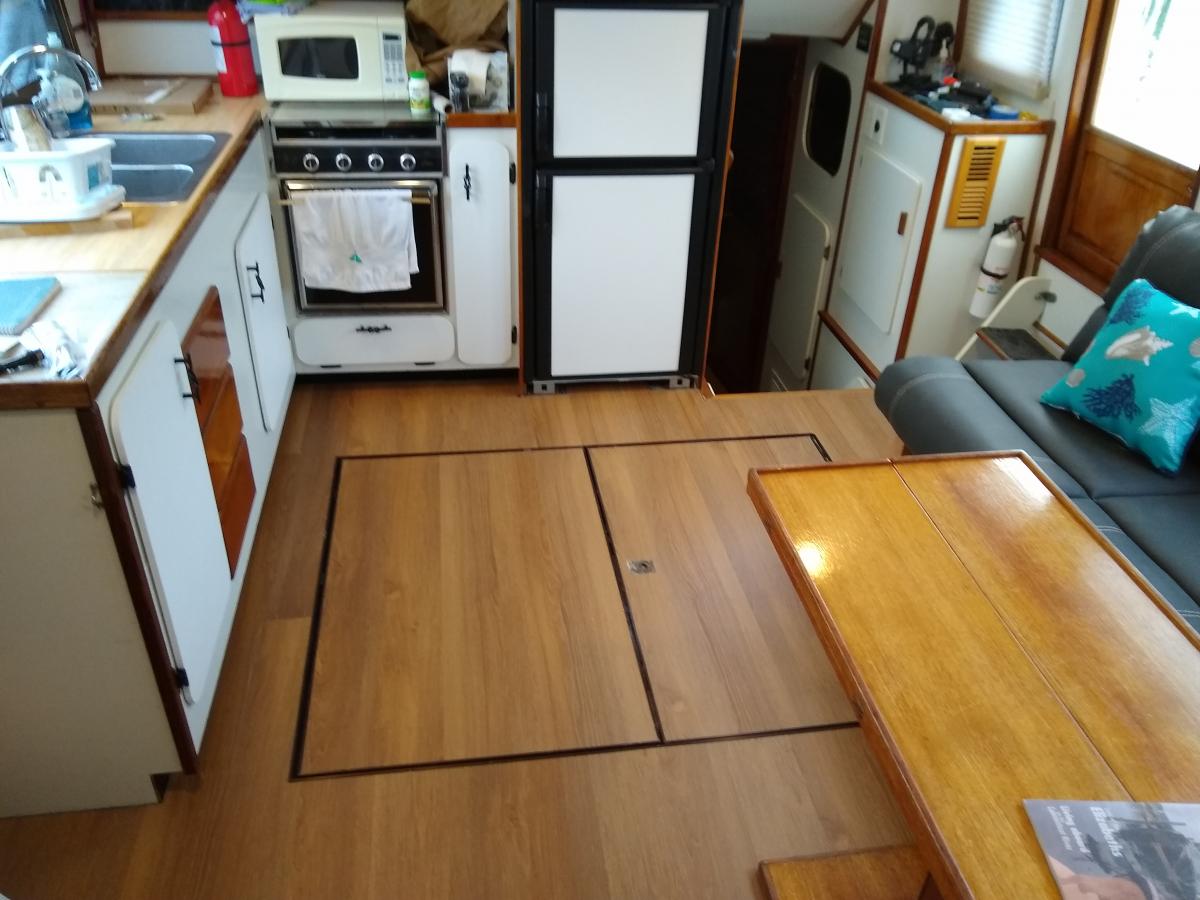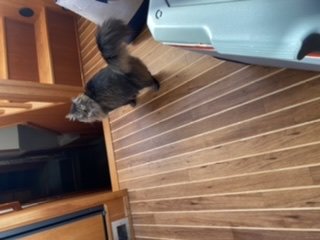Comodave
Moderator Emeritus
- Joined
- Jul 2, 2015
- Messages
- 21,280
- Location
- Au Gres, MI
- Vessel Name
- Black Dog
- Vessel Make
- Formula 41PC
We are buying a new to us boat. We want to get rid of the carpet, besides it is stained and worn, because of our dog’s hair. We had a teak and holly sole in our trawler and loved how easy it was to vacuum up the hair.
Has anyone put vinyl plank flooring in their boat? If so, did you use it as a floating floor, glue down or PSA? I have some samples and have used a heat gun to bend them and it seems to work well. I am thinking on using aluminum J channel to trim the edges on the steps and around the in deck hatches. Any feedback would be appreciated. We are still in the research phase since we can’t get the sea trail and survey done until the 20th.
Has anyone put vinyl plank flooring in their boat? If so, did you use it as a floating floor, glue down or PSA? I have some samples and have used a heat gun to bend them and it seems to work well. I am thinking on using aluminum J channel to trim the edges on the steps and around the in deck hatches. Any feedback would be appreciated. We are still in the research phase since we can’t get the sea trail and survey done until the 20th.




